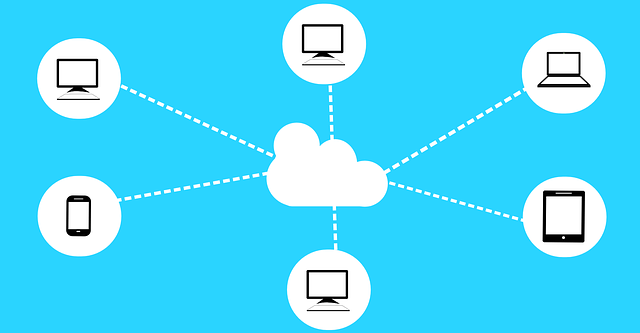Traditional on premise legacy systems are limited in their versatility and utilisation. This is due to their inflexibility, lack of scalability and high maintenance costs. These factors hinder legacy systems from keeping up with their modern variants and hinder down business operations. Having such outdated software is detrimental for any business that is seeking to thrive and flourish in the modern digital landscape. Numerous such problems are solved by a transformative technology referred to as cloud computing. Cloud computing with its cloud native architecture provides incredible scalability and versatility to its users. It has revolutionised the way businesses manage and operate their IT infrastructure.
Table of Contents
What is Cloud Computing?

Cloud computing refers to the provision of computing services with the involvement of servers, storages and databases over the internet. It also includes software and networking and analytics.” Commonly referred to as “the cloud,” this model of computing allows businesses and companies to access the pool of resources according to their ease and use, instead of spending money and making investments on physical and integral infrastructure. By needing to have to pay for only the cloud services in need, businesses are better off in reducing operation costs, scaling according to their needs and more efficiently running infrastructure.
What is Software Modernization?
It is the process of updating legacy software systems to meet current and future business demands. This modernization process includes re-architecting, re-coding or migrating the existing application to more modern platforms and technologies. Basically, modernization increases the performance, stability, security and integrability of the applications used in legacy. The simple modernization process may vary all the way to the total revamp depending on the complexity and requirements of the business.
Cloud computing models in Software Modernisation
Cloud computing enables businesses through delivering resources that save on costs and improve on scalability according to demand. Different cloud computing models have different merits on the software modernisation process. There exist three major cloud services models and they include the following:
1) Infrastructure as a service(IaaS)
Infrastructure as a service simply refers to business models that provide basic infrastructure; virtual machines, stoarages and networking infrastructure to run applications. Such a model is perfect for the business agencies who would want to migrate existing legacy applications into the cloud without any significant changes. IaaS will enable firms to scale more easily, bolster disaster recovery and decrease the reliance upon physical hardware. In short, it gives companies control of application and system management, yet the management of hardware is placed in the hands of the service provider in the cloud.
2) Platform as a service (PaaS)
A platform as a service is given to the developer for the full application lifecycle: developing, testing and deploying. It allows developers to work on the coding process and innovation, relieving them of the worry of infrastructure management. PaaS is suited for businesses evolving their software with modern development practices, such as DevOps, or through a continuous integration/continuous deployment (CI/CD) process. PaaS includes tools and frameworks that offer frictionless development processes and good collaboration between development and operations teams. It helps in creating scalable and resilient fast-spreading applications.
3) Software as a Service (SaaS)
SaaS gives its users fully functioning software over the internet. They tend to provide a subscription-based model. Businesses subscribe to these software applications and use them without having to consider the management and maintenance of the same. Resultantly, SaaS platforms make the perfect solution for modernization of business function such as customer relationship management (CRM), enterprise resource planning (ERP) and human resources (HR). SaaS provides businesses with advanced features which avails them the chance to enhance the user experience and reduce IT overhead. SaaS applications are normally designed for proper, accessible user interfaces that is accessed from any device with an active internet connection. In this way, superb mobility and collaboration are boosted on a great level.

Benefits of Cloud computing in Software Modernisation
Cloud computing offers various benefits to its users providing them with scalability, cost efficiency, increased collaboration, regular updates and maintenance and improved security.
• Scalability and flexibility
One of the greatest advantages of cloud computing is its incredible scalability and flexibility. Traditional systems require substantial upfront investments in both hardware and software. Cloud services provide businesses with the ability to scale their resources up or down based on their demand. This ensures optimal performance while reducing costs at the same time. This scalability proves to be more beneficial for businesses with fluctuating workloads or seasonal demands. Cloud computing provides the flexibility to quickly deploy new applications and services allowing businesses to respond swiftly to market changes and opportunities.
• Increased collaboration
Cloud based solutions facilitate seamless collaborations of platforms. Being of cloud native, data from these platforms are easily available from any place and at any time, using any device that has an internet connection. This flexibility is particularly beneficial in today’s remote and hybrid work environments. Through this, real-time collaboration is possible as multiple users work on a similar document or project at the same time, wherever they are in the world. This improves communication and coordination of teams, leading to rapid projects and fast decision-making., among other benefits
• Cost efficiency
Cloud computing allows businesses to pay only for resources they are using. Businesses, therefore, save on investments that thus could have gone into the hardware and software. This model does not only reduce upfront costs but also minimizes ongoing maintenance costs since the responsibility of maintaining and keeping up-to-date the infrastructure lies on the cloud service provider. This would have enabled them to invest more in proactive programs and innovation while they will have been relieved of the stress of infrastructure management. It also leads to reduced energy needs and physical space requirements, hence contributing to the overall amount of money a person would save.
• Regular updates and maintenance
Maintenance and updating of software and infrastructures are managed by the cloud service providers. They make sure that their clients receive the latest features and security patches. All this management will be automated, hence reducing the workload on developers in maintaining which, in turn, will save on time and resources. Such things make developers concentrate on the more important tasks of the day, raising productivity and improving as well. Regular updates ensure that the software remains in tune with contemporary improvements in technology and security standards, which in turn lowers vulnerability and system downtime. A proactive approach to maintenance enhances the reliability and performance of the system.
• Improved security
The well-reputed cloud providers ensure necessary security measures through investment, not leaving out encryption, identity and access management and regular security audits to make sure they meet various regulations and compliance with industry standards. Improved areas of security in the environment have mechanisms for strong data protection, threat detection and responses and facilities for disaster recovery. These help businesses ensure that their data is safe and create a level of belief in the people with whom they work. Cloud computing has been taken as the basis for modernization because it is highly scalable and flexible; therefore, it raises no doubt in terms of being effective in cost.
These help avoid limitations that come due to legacy systems. Cloud computing, in whatever form it is taken—IaaS, PaaS, or SaaS—provides the tools and capabilities to modernize the software system to meet the requirements of the business environment, which is dynamic. These providers make it easier for collaboration and accessibility and enhance the security and compliance of the information. With the right use of cloud computing services, businesses can now structure their approach to take the softwares to new heights. These softwares of cloud computing present the opportunities for innovation, growth and competitive advantages that are needed in the digital age.

Himcos provides Software Modernisation services. Our experts help improve performance, reduce costs, enhance security and foster innovation providing our clients with scalable, secure and high performing applications.



